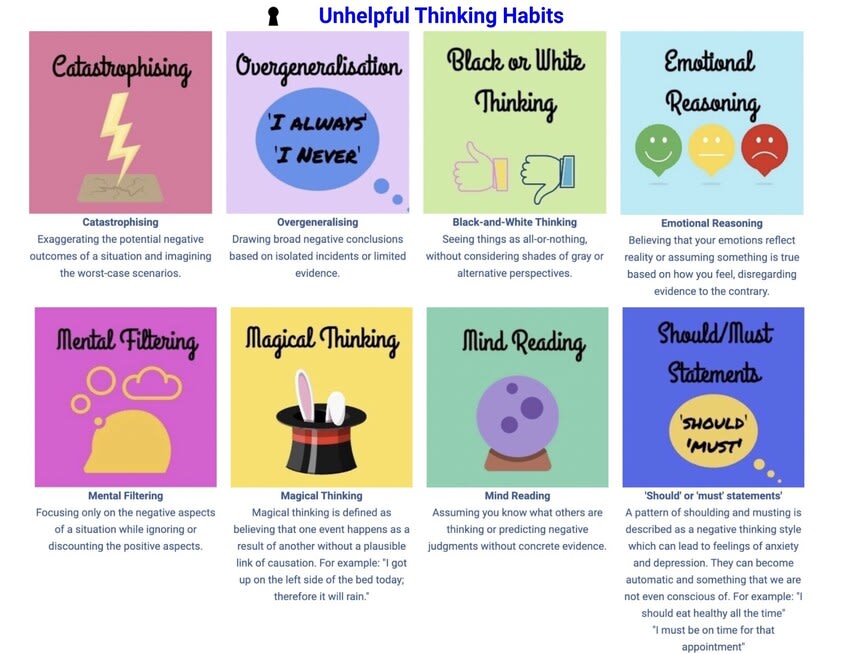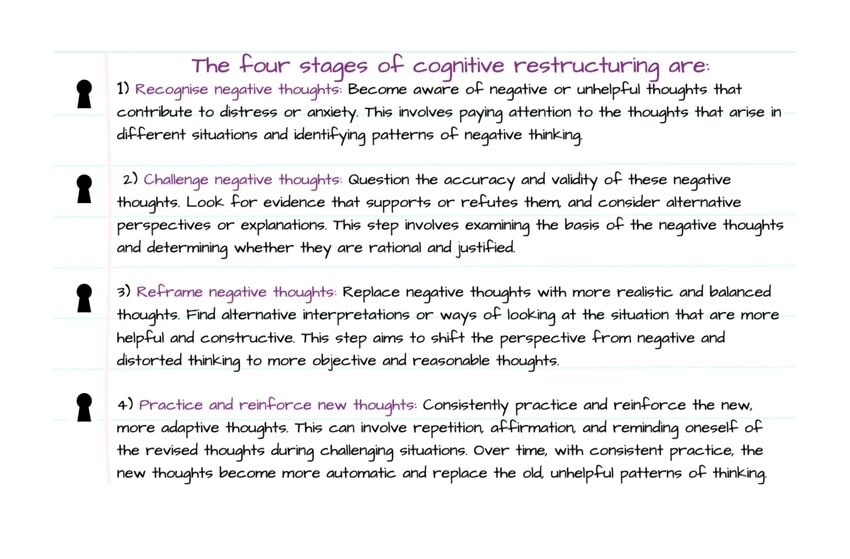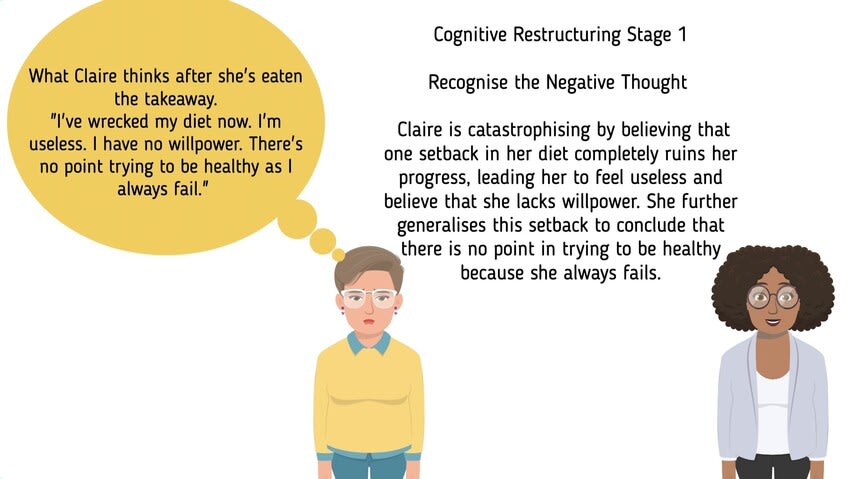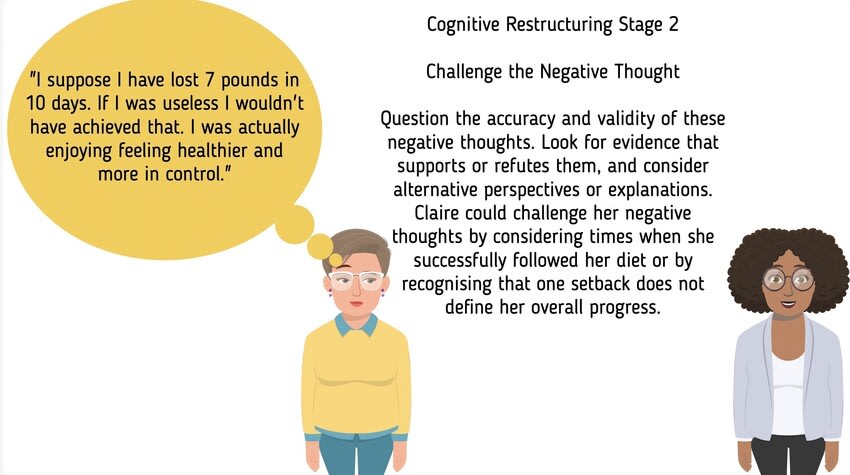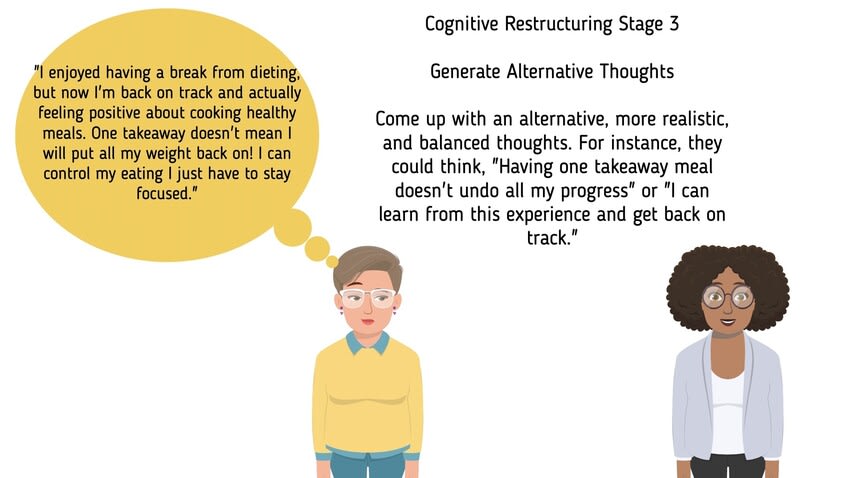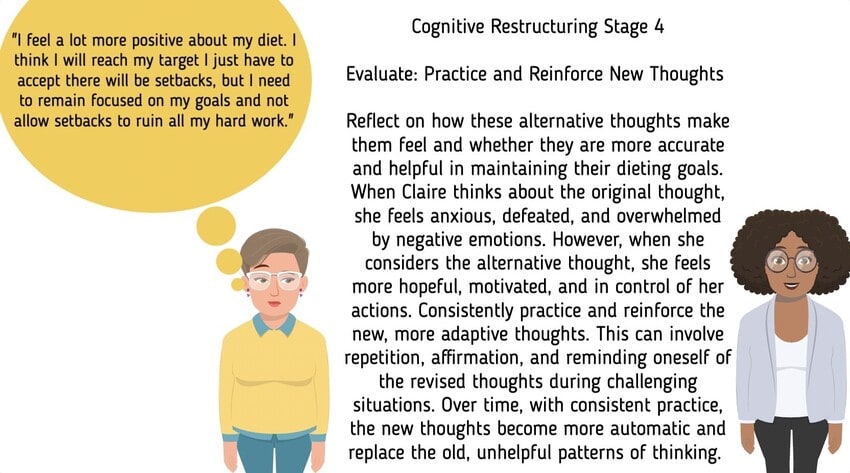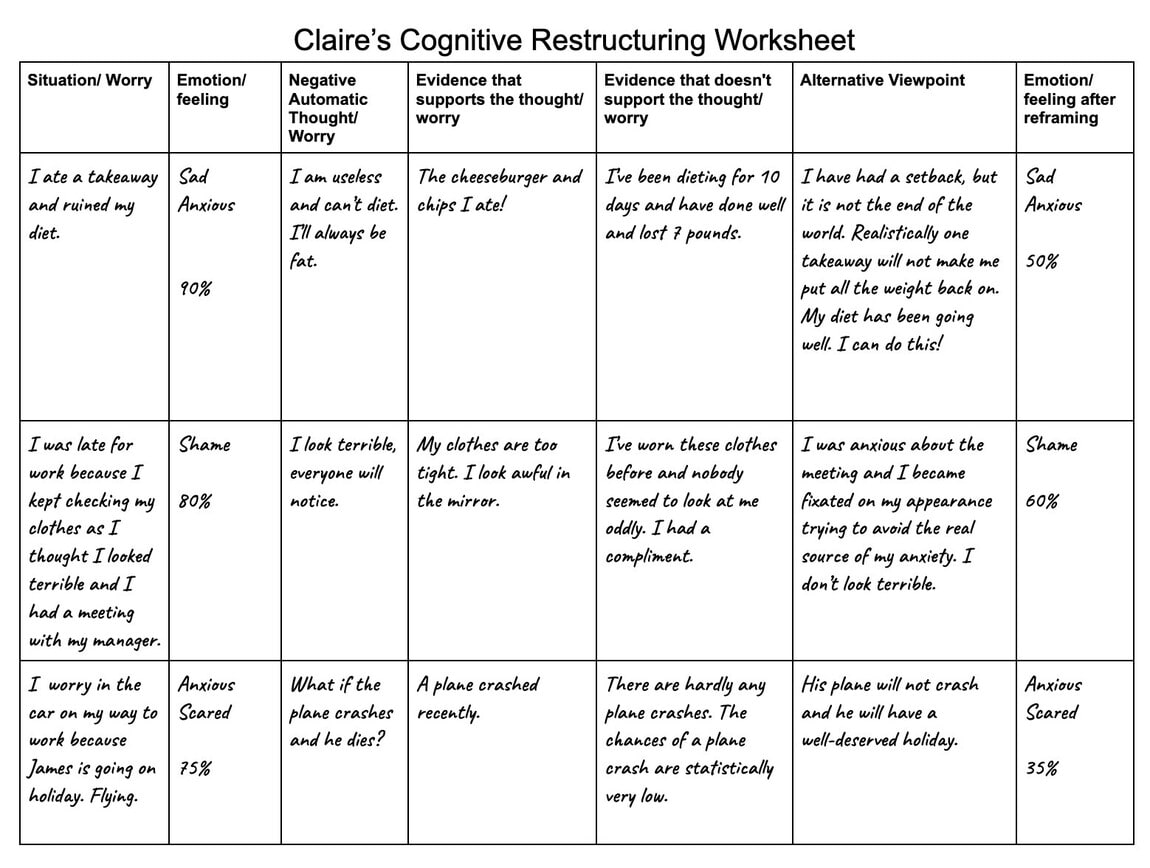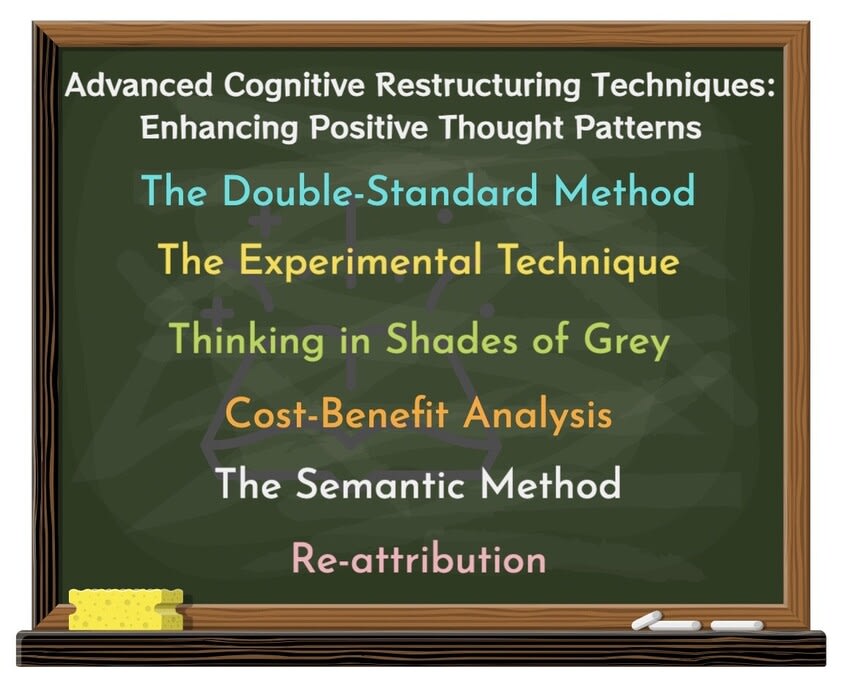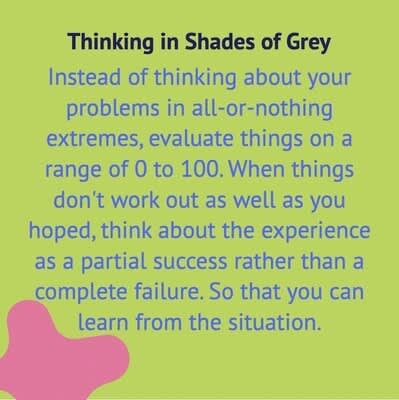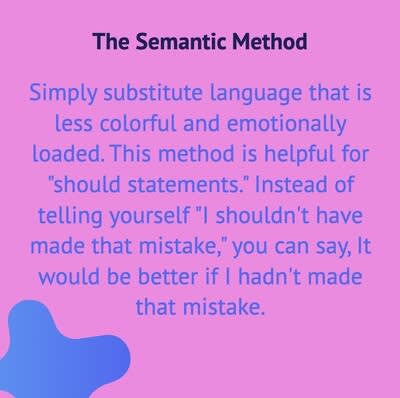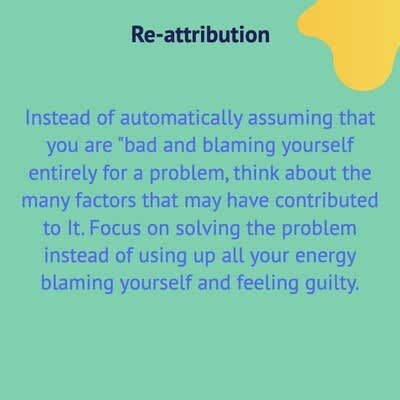Cognitive Restructuring and Unhelpful Thinking
Cognitive Restructuring and Unhelpful Thinking

SESSION OVERVIEW
As a GAD sufferer, you may find yourself trapped in unhelpful thinking habits that worsen your anxiety. In this session we will examine how cognitive restructuring acts as a powerful tool that can help you challenge and replace unhelpful thoughts with more balanced and helpful ones. This session is quite detailed so you may wish to complete the different sections over several days/evenings.
Psychologist Tip: "Challenge unhelpful thoughts by examining evidence for and against them—this is the essence of cognitive restructuring."
Unhelpful Thinking Habits Recap and Case Study

UNHELPFUL THINKING HABITS
Unhelpful thinking habits such as catastrophising, overgeneralisation, and mind-reading, can create a cycle of distress and worry. In module 1, we explored how these habits can affect your emotions and behaviours, leading to increased anxiety and avoidance.
By becoming aware of your negative thoughts, examining the evidence for and against them, and reframing them with more realistic perspectives, you can break free from the grip of anxiety. Cognitive restructuring empowers you to manage your GAD symptoms more effectively and improve your overall well-being by fostering a more positive outlook and coping strategy.
The case study and video will help guide you in understanding how cognitive restructuring works and why keeping a thought/worry diary helps.

Case Study: Claire's Weight Loss Journey
Background: Claire is a 58-year-old woman who has been struggling with her weight for several years. She works long hours in a stressful job, which often leaves her feeling exhausted and craving comfort food. Claire is determined to lose weight and improve her health.
Goal: Claire's goal is to adopt a healthier lifestyle and lose 20 pounds in the next six months. She wants to feel more confident, have more energy, and reduce her risk of developing weight-related health issues.
Watch this video explaining how our mental processes can lead to unhelpful thoughts that are often automatic and unconscious.

Cognitive Restructuring

The process of cognitive restructuring involves four key steps. First, it's crucial to recognise negative thoughts and become aware of how they impact our emotions. Next, we challenge these negative thoughts by questioning their accuracy and searching for evidence that supports or contradicts them. This allows us to gain a clearer perspective on the situation.
Once we've challenged our negative thoughts, we then reframe them by finding more balanced and realistic alternatives. This step helps us see the situation from different angles, leading to more helpful interpretations. Finally, we must consistently practice and reinforce these new, adaptive thoughts to solidify the positive changes in our thinking patterns.
By understanding our mental processes and engaging in cognitive restructuring, we can actively address unhelpful thinking habits and experience greater emotional well-being.

Cognitive Restructuring in Four Steps: Transforming Negative Thoughts for Positive Change
Four Stage Approach to Cognitive Restructuring
While cognitive restructuring can involve varying steps and techniques depending on the specific approach and individual needs, these four steps can provide a foundational framework for the process.
Below is an example of how cognitive restructuring works based on the case study above.
The Cognitive Restructuring Worksheet is an essential tools in CBT for addressing GAD and challenging unhelpful thought patterns.

Cognitive Restructuring Worksheet Overview
This worksheet is structured to help you through the cognitive restructuring process by breaking down your thoughts and emotions into manageable steps:
Situation: Write down the specific situation that triggered your negative thoughts. This helps you pinpoint what you need to address.
Emotion/Feeling: Note the emotions you feel in response to the situation. Understanding your emotional response is key to identifying the thoughts that need restructuring.
Negative Automatic Thought/Worry: Record the automatic negative thoughts that occur. Recognizing these is crucial for challenging them later.
Evidence Supporting the Thought: List any reasons or evidence that seem to support your negative thoughts. This step is important to validate your feelings but also to see where your thinking might be biased.
Evidence Against the Thought: Write down evidence that contradicts your negative thoughts. This helps develop a more balanced view and weakens the hold of negative thinking.
Alternative Viewpoint: Think of a more realistic and balanced way to view the situation. This step involves replacing negative thoughts with constructive ones.
Emotion/Feeling (After Challenge): Reflect on how your emotions change after replacing negative thoughts with more balanced ones. This shows the impact of cognitive restructuring on your feelings.
By working through these sections, you can gradually shift your thought patterns from negative to more balanced and realistic ones, improving your emotional well-being and reducing anxiety.
Question: What if my anxiety is still high after reframing my thoughts?
Answer: It's perfectly normal for some anxiety to persist even after engaging in cognitive restructuring and reframing your thoughts. For example, Claire's anxiety score is still high at 60% after cognitively reframing the situation. Cognitive restructuring is a helpful technique, but it may not eliminate all anxiety immediately. Anxiety is a complex emotion, and it can be influenced by various factors.
If you find that you still feel anxious after reframing your thoughts, it might be beneficial to incorporate coping strategies to manage your anxiety. Coping strategies can complement cognitive restructuring and provide additional support in reducing anxiety. Some examples of coping strategies include relaxation techniques (deep breathing, progressive muscle relaxation), mindfulness exercises, engaging in physical activity, seeking social support, or practicing self-compassion. These techniques will be explored as we continue through the course.

Advanced Cognitive Restructuring Techniques: Enhancing Positive Thought Patterns

Advanced Cognitive Restructuring Techniques: Enhancing Positive Thought Patterns
These techniques build upon the foundation established in the four stages, providing you with more tools to effectively challenge and modify your unhelpful thoughts. By integrating these advanced techniques, you can enhance your ability to overcome negative thinking patterns, reduce anxiety, and foster more adaptive ways of interpreting and responding to challenging situations.
The purpose of cognitive restructuring is to create a healthier and more positive way of thinking about things, especially when it comes to anxiety. As you practice recognising unhelpful anxious thoughts and changing them to more balanced ones, you'll get better at doing it naturally in your everyday life. So, while you may not need to use the worksheet all the time, keep it handy until we complete session 2.4, where it will be really helpful. It's a valuable tool to support you along the way!





